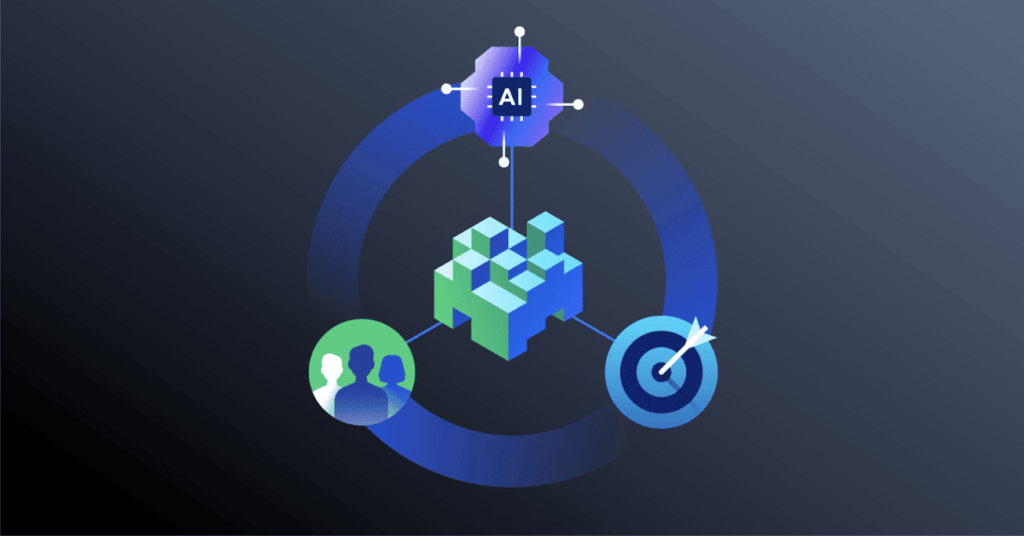The boom in Generative AI has captivated the business world. Early adopters have seen significant market gains. However, for product managers, navigating this exciting yet potentially risky landscape requires a measured approach.
We derived some valuable insights from PwC’s article on the development of an “early days” strategy to leverage AI in the current product landscape.
Managing the AI Risk/Reward Tug-of-War
Just like some investors embrace high-risk, high-reward ventures, some companies aggressively pursue AI. However, being so rapid can lead to unexpected losses if proper safeguards aren’t in place. Similarly, excessively trying to avoid risk can slow down growth and leave your product behind the competition.
Striking the Right Balance:
- Embrace a Framework for Responsible AI Adoption: Develop a clear guide for your AI development and usage. This framework should address ethics, legality, and biases within your AI models.
- Cross-Functional Collaboration: Input from various stakeholders, including engineers, data scientists, and legal teams is important. Having a dedicated team ensures all bases are covered.
- Focus on Practical Applications: Don’t get lost in the theoretical possibilities of AI. Identify specific use cases where AI can improve your product’s functionality or user experience.
Learning from Others:
Several companies have successfully navigated the generative AI landscape. These companies demonstrate proactive risk management. Look for case studies and reports that showcase successful use of AI in your specific product domain. This will provide valuable insights and real-world examples to guide your own strategy.
By prioritizing responsibility, you can harness Generative AI to unlock new possibilities for your product while avoiding pitfalls. This approach will not only benefit your users but also establish your product as a leader in AI revolution.

Aligning Generative AI with Your Digital Strategy
The key to transform AI from a mere technology to a critical asset lies in proactive planning and responsible implementation.
Here’s how to bridge the gap and unlock the true potential of AI, propelling your competitive advantage in the marketplace:
- From Silo to Synergy: Avoid treating generative AI as a standalone project. Instead, view it as a powerful amplifier for your existing digital efforts.
- Alignment for Impact: For maximum effectiveness, ensure your digital and AI strategies share common ground. This means aligning on key objectives and success metrics. This creates a clear path for measuring its combined impact.
- Continuous Improvement: Don’t let your strategies become stagnant. Conduct regular strategic reviews to assess how your AI initiatives are contributing to your overall digital transformation goals.
Scaling Your Generative AI Wins
Experimentation is the lifeblood of innovation, and generative AI is no exception. But how do you make sure your initial experiments with AI don’t just fizzle out? The key lies in prioritizing scalability from the get-go. Here’s how to transform your AI experiments from one-off projects to enterprise-wide game-changers:
- Structured Exploration: Don’t approach experimentation as random tinkering. Set up a clear process for exploring what AI can do for your company. This will help you find valuable ideas and figure out which ones can be used by everyone.
- Stepping Stones, Not Dead Ends: Cultivate a culture of innovation where AI experiments are seen as stepping stones to bigger breakthroughs. Encourage teams to think beyond immediate results.
- Piloting for Scale: Pilot programs are a great way to try out your AI ideas on a small scale before going all in. But remember, when you start your pilot program, think about how you can spread the use of this AI solution throughout the company from the very beginning.
- Pilot to Blueprint: Don’t just celebrate your successful experiments – use what you learned as a recipe for using AI across the company.
- Agile Scaling: The road to success is rarely linear. Embrace agility as you scale your AI initiatives. Be prepared to adapt your strategies.
Unleashing Productivity Power of Generative AI: A Strategy
A study by PwC found that organizations that implemented AI solutions experienced an increase in productivity. To truly unlock its power, product managers need a well-defined strategy plan.
Beyond Efficiency: Generative AI’s impact extends beyond simply automating tasks. It can transform your operational models and workforce planning strategies. Consider how AI can:
- Free Up Valuable Time: Can AI handle repetitive tasks such as data analysis or reporting, letting your team to focus on higher-value activities like product innovation?
- Enhance Decision-Making: Can AI-powered insights inform your product roadmap and development strategies, leading to more data-driven decisions?
- Personalize User Experiences: Can AI tailor content for specific user segments, enhancing customer satisfaction and engagement?
Strategic Redeployment: Increased productivity gives rise to opportunities. Develop strategies to redeploy these gains to achieve your long-term goals. Here are a few approaches:
- Invest in Innovation: Allocate resources towards further AI development, allowing you to push the boundaries of what’s possible and gain an edge.
- Expand Product Offerings: Use the gains of productivity to develop new features and functionalities, making your product portfolio better to attract new users.
Firms in Mainland China and Hong Kong… 30% time savings in systems design, 50% efficiency gains in code generation, and an 80% reduction in time spent on internal translations
PwC Report
The Human Factor: While AI promises efficiency gains, it’s important to consider the human element. Develop strategies to manage your workforce by:
- Reskilling and Upskilling: Equip employees with the skills needed to work effectively with AI, ensuring they remain valuable assets.
- Clear Communication: Maintain open communication with your team about the future of work and how AI will impact their roles.
- Focus on Value Creation: As routine tasks become automated, empower your team to focus on creating value in strategy, like developing innovative product solutions or building stronger relationships with customers.
Measure and Adapt: Don’t be afraid to experiment and adapt. Develop frameworks to measure the impact of AI on key performance indicators (KPIs). This data will allow you to make better future decisions.

Building a Workforce That Thrives Alongside Generative AI
While generative AI promises immense potential, its success depends on your people. Here’s how to ensure your AI initiatives are not just technologically sound, but also human-centered:
- Empowering Collaboration: Actively involve employees in shaping your AI strategy. Gather insights and address concerns from all levels.
- Building AI Fluency: Implement comprehensive training programs focused on AI literacy. Form these programs to accommodate diverse roles. This ensures everyone understands how to work alongside AI technologies.
- Transparency is Key: Maintain open communication channels. Clearly explain the objectives, capabilities, and limits of AI initiatives.
- Ethics at the Forefront: Openly discuss the ethics surrounding AI use. This includes privacy concerns, biases in AI models, and fear of losing jobs.
- Addressing Concerns: Some employees may experience resistance towards AI. Offer support mechanisms to address these concerns.
- Building a Future-Ready Workforce: The key to long-term success lies in a future-proofed workforce. Invest in programs that equip your team with the skills and mindset needed to thrive in an AI-driven world.
Beyond the Walls: Ecosystem Collaboration
Finally, Generative AI’s true power lies not just within your organization, but in its ability to fuel collective innovation across a broader ecosystem. Here’s how to leverage partnerships to unlock even greater benefits:
- Diversity Fuels Innovation: Ecosystem partners bring diverse expertise and insights. Leverage these strengths to accelerate AI development.
- Building Trustworthy Collaboration: Establish frameworks that ensure data privacy and intellectual property protection.
- Joint Ventures for Impact: Identify shared challenges or opportunities. Pool resources and expertise through collaborative projects.
- Co-creation and Shared Learning: Foster a culture of co-creation where lessons learned from AI initiatives are openly shared. This allows collective learning and growth within the ecosystem.
- Measuring Collaboration’s Impact: Track how ecosystem collaboration enhances your AI capabilities, innovation, and competitive edge. Use insights to improve your strategies and maximize benefits.
Imagine a future where AI isn’t just a buzzword, but a silent partner amplifying your team’s capabilities. Generative AI holds that power, but it thrives in collaboration, not isolation. Remember, AI is a tool, and the most effective tool is one you use collaboratively.
Partner with the ecosystem, share ideas, and watch your organization transform into an innovation powerhouse. The future of work is human-AI harmony, and it’s closer than you think. Don’t be afraid to experiment – some of the most groundbreaking discoveries come from unexpected places. Are you ready to rewrite the rules of what’s possible?

